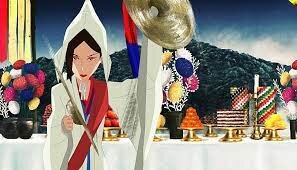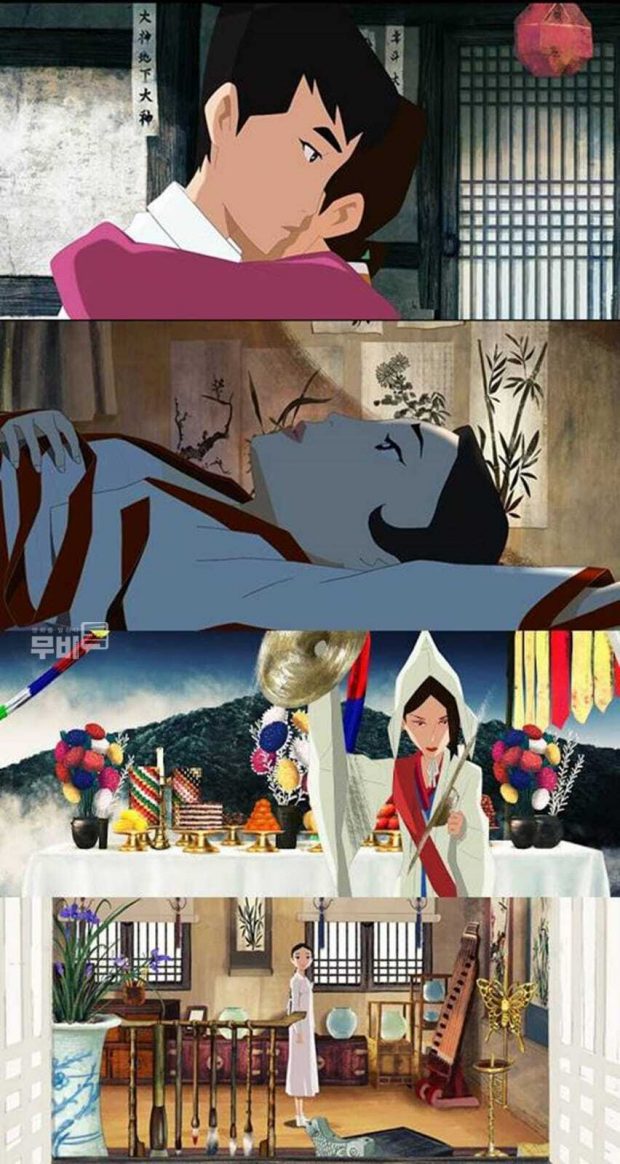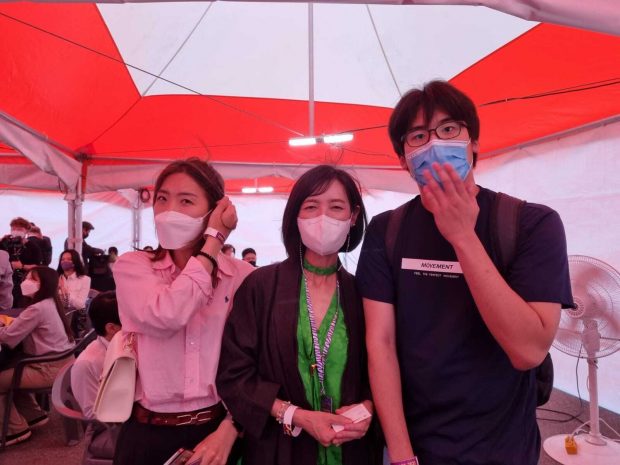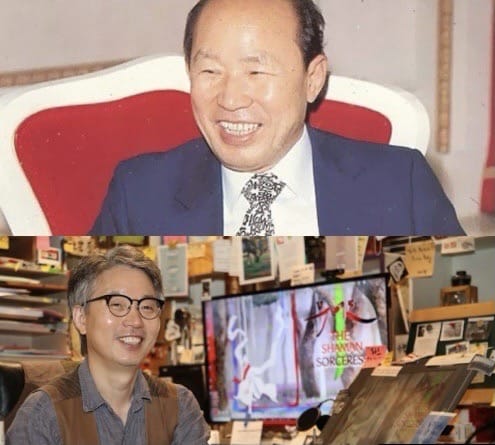
2021 PIPFF Changes novel ‘Munyeodo’ to Musical Animation in 85 years

By Min Da-hye
SEOUL: The 3rd Pyeong Chang International Peace Film Festival (PIPFF) raised its curtain on June 17, starting its journey for six days. The film shown at the opening-day ceremony was ‘Munyeodo,’ recreated by a Korean animation director Ahn Jae-hoon.
In spite of the cloudy weather, all of the audience focused their attention on the outdoor widescreen. In 85 years, Kim Dong-ri’s original novel ‘Munyeodo’ resurrected into a musical animation.
One of his early works introduced in 1936, ‘Munyeodo (The Portrait of Shaman)’ is a short story about shaman mother Mo-hwa and her Christian son Wook-yi. Mo-hwa has been practicing shamanism for her entire life.
One day, her son Wook-yi who becomes a Christian returns home. However, the family reunion sparks a conflict in the family and comes to a miserable end. Nang-yi, Mo-hwa’s daughter, paints this tragedy and names it as ‘The Portrait of Shaman’ – the title of this story.

The work, presented as a story of a shaman in this painting, also represents a tragic person who tries to protect her own belief by clinging to the last remaining light of everything dying out in a changing whirlpool. The original novel is now remembered as one of the best works in modern Korean literature, because, through a mysterious; vain; and dreamy world, it showed the problem of humanity where the Korean folk culture faces foreign world’s ideas.
The AsiaN shared reviews about the animated version of ‘Munyeodo’ with an intern reporter Kim Dong-yeun and a reader Kam Eun-hee.
A reader Kam Eun-hee says: “There are a lot of things to see such as the people’s clothes and backgrounds changing from the Joseon Dynasty to the modern times as the story progresses. I was mesmerized by the beautiful sights of South Korea’s four seasons that were created with animation. I think expressing the deep-rooted religious traditions of Korea gave it distinction from Hollywood films.”

An intern reporter Kim Dong-yeun says: “The scene where Christian hymns and ritual chants intersect seems to reflect the desperate minds of Mo-hwa and her children Wook-yi and Nang-yi towards each other. Through the main character Nang-yi (who is a deaf girl), the movie described well about the tension and conflict between traditional and modern religions.”
Reader Kam adds: “I admire the insight of director Ahn who tried to portray how conflicts made the past traditions fade away and be replaced by new cultures, through the life of a woman. It is amazing that his work is expressed with dramatic animation techniques and sorrowful beauty. This movie reminded me of big and small religious conflicts taking place around the world.”
Reporter Kim adds: “I was impressed by the scenes where the ‘belief’ wishing for blessings and peace gradually degenerated into ‘pressingness’ and ‘obsession,’ and eventually turned into a big fight where the characters failed to accept each other’s religions.”

Kam, a reader, mentions: “Through the animation, I could see how beautiful Korean sceneries made out of four seasons are. Not just that, but it gives a glimpse of Korea’s compassionate life shared by neighbors. Even though the era we live in is different from that of the movie, I felt sadness because I sympathized with the conflicts between parents (who belong to the old generation) and children (who belong to the new generation) and parents’ heartbreaking feelings toward their sick children.”
Reporter Kim states: “I think it shows a generational conflict between people who have lived in different times. It is necessary to acknowledge that each other’s beliefs can be different, but I wonder whether it could become possible. Where are we heading for? Is it the great paradise or the heaven of Christianity?”
Reader Kam adds a few more thoughts about this movie: “It was a bit sad because a particular nuance of Korean regional dialect is not reflected well when translated into English. However, Korea’s unique five cardinal colors looked sophisticated without being tacky even when recreated into animation. For me, this is the best film for the opening-day ceremony of PIPFF and perfect match to its slogans ‘coexistence’ and ‘peace.’ The strong impression of ‘Munyeodo’ would stay in my mind for a very long time.”
Animation director Ahn Jae-hoon, who created this movie, stood on the stage prior to the showcase and said: “In order to find a method surpassing the original novel’s theme ‘what religion means to mankind,’ I adopted a musical genre to highlight the brilliant colors and unique characters.” Kim Hyung-seok, a programmer for this year’s PIPFF, said: “The reason we chose ‘Munyeodo’ for the opening film is that it deals with the ‘drama of conflicts.’ I wish the audience to think that what we really need in this 21st century’s global community, where peace is becoming more distant, is an ‘effort to become one’ beyond being different.”
Translated by Dong Yeun Kim


